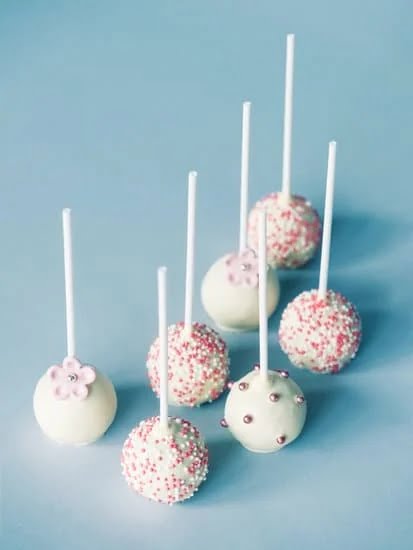Italian Layer Cookies add a unique and delicious twist to cake decoration. These delightful cookies, also known as Italian rainbow cookies or Venetian cookies, are perfect for creating visually stunning and flavorful cakes.
In this article, we will explore the art of decorating cakes with Italian Layer Cookies and provide step-by-step instructions on how to achieve professional-looking designs. From gathering the necessary ingredients to adding the final touches, you’ll learn everything you need to know to create beautiful and delectable cake creations using these special cookies.
Italian Layer Cookies are not only beautiful but also offer a delightful burst of flavor that enhances any cake. Made with almond paste, raspberry jam, and topped with decadent chocolate ganache, these cookies bring a rich and indulgent taste to your cake creations. Whether you’re looking to impress guests at a party or simply want to elevate your baking skills, incorporating Italian Layer Cookies into your cake decorating repertoire is sure to delight both your eyes and taste buds.
Throughout this article, we will guide you through each step of the process. Starting with gathering the necessary ingredients and tools for both the cake and the Italian Layer Cookies, we will ensure you have everything needed for success. We will then dive into baking the perfect cake base, providing tips for achieving moistness and levelness. Next, we’ll share a detailed recipe for making homemade Italian Layer Cookies or alternatives if store-bought options are preferred.
So prepare yourself for a culinary adventure as we embark on the journey of decorating cakes with Italian Layer Cookies. With our expert guidance and easy-to-follow instructions, you’ll soon be creating stunning masterpieces that not only look incredible but taste absolutely divine as well. Get ready to wow your family and friends with your newfound skills in cake decoration utilizing these irresistible cookies.
Gathering Your Ingredients and Tools
To successfully decorate a cake with Italian Layer Cookies, it is essential to gather all the necessary ingredients and tools beforehand. Here is a list of items you will need for both the cake and the Italian Layer Cookies:
Cake Ingredients:
1. All-purpose flour 2. Granulated sugar 3. Baking powder 4. Salt 5. Unsalted butter 6. Eggs 7. Milk 8. Vanilla extract Italian Layer Cookie Ingredients:
1. Flour 2. Sugar 3. Unsalted butter 4. Eggs 5. Vanilla extract In addition to the ingredients, you will require specific tools for cake decoration:
- Piping bags: Used for precise application of frosting or decorating materials.
- Piping tips: Different shapes and sizes are available to create various designs.
- Offset spatula: Ideal for spreading frosting evenly on the cake layers.
- Cake turntable: Helps in rotating the cake for smooth and even icing application.
- Bench scraper: Used to achieve clean edges while frosting the sides of the cake.
- Angled spatula: Useful for smoothing out frosting on the top of the cake.
It is crucial to have all these ingredients and tools readily available before starting the baking and decorating process to ensure a seamless workflow.
Next, let’s move on to section 3 where we will discuss how to bake the perfect cake base for your Italian Layer Cookie decoration masterpiece.
Baking the Perfect Cake Base
Step 1: Preparing the Ingredients
Before you start baking your cake, gather all the necessary ingredients. The basic ingredients for a cake base include flour, sugar, eggs, butter or oil, baking powder or soda, and flavorings such as vanilla extract. It is important to measure the ingredients accurately to ensure the best results. You can also add additional flavors like citrus zest or cocoa powder to enhance the taste of your cake.
Step 2: Mixing the Batter
To begin making your cake base, preheat your oven to the recommended temperature stated in your recipe. In a large mixing bowl, cream together the butter (or oil) and sugar until light and fluffy. Add the eggs one at a time, beating well after each addition. Incorporate the dry ingredients gradually into the wet mixture, alternating with any liquid components specified in your recipe.
Step 3: Baking and Cooling
Once your batter is mixed thoroughly, pour it into a prepared cake pan or pans. Smooth out the top of the batter using a spatula or back of a spoon to ensure an even surface. Place the cake pan(s) into the preheated oven and bake according to your recipe’s instructions.
After baking, remove the cakes from the oven and let them cool in their pans for about 10 minutes. Then gently transfer them onto wire racks to cool completely before decorating. It’s important that your cake is completely cooled to prevent any issues with melting frosting or crumbling while handling during decoration.
Tips for Success
- To achieve an evenly baked cake, make sure you evenly distribute the batter in your pans.
- Use parchment paper rounds cut to fit into your cake pans for easier removal.
- Test if your cakes are done by inserting a toothpick into the center; if it comes out clean or with a few crumbs, the cakes are ready.
With your perfectly baked and cooled cake base, you’re now ready to move onto the next step of decorating with Italian Layer Cookies.
Preparing the Italian Layer Cookie Component
Italian Layer Cookies are not only delicious on their own, but they also add a unique and flavorful element to cake decoration. Before you can start assembling and layering these cookies within your cake, it is essential to prepare them properly. While store-bought options are readily available, making homemade Italian Layer Cookies allows for customization and ensures freshness.
To make homemade Italian Layer Cookies, here is a detailed recipe that you can follow:
Ingredients:
- 4 cups all-purpose flour.
- 2 teaspoons baking powder.
- 1 cup unsalted butter, softened.
- 1 cup granulated sugar.
- 4 large eggs.
- 2 tablespoons vanilla extract.
- Food coloring (optional).
Instructions:
- In a medium bowl, whisk together the flour and baking powder until well combined.
- In a separate large mixing bowl, cream the softened butter and sugar together until light and fluffy.
- Add the eggs one at a time, beating well after each addition. Stir in the vanilla extract.
- Gradually add the dry ingredients to the wet mixture, mixing until just combined.
- If desired, divide the dough into smaller portions and color each portion with food coloring.
Once you have prepared the Italian Layer Cookies according to this recipe or chosen an alternative store-bought option, it is time to move on to assembling them within your cake.
When layering the Italian cookies into the cake, be sure to follow these instructions for best results:
- Begin by leveling your baked cake base using a serrated knife or cake leveler to create an even surface for assembling.
- Spread a thin layer of frosting or ganache on top of one cake layer to act as glue for the Italian cookies.
- Carefully place the first layer of Italian cookies on top of the frosted cake layer, ensuring they cover it completely in a single layer without gaps.
- Repeat the process with additional cake layers and the Italian cookies until you have used all the cookies and cakes, ending with a final layer of cookies on top.
To ensure that the Italian Layer Cookies stick to the cake layers securely, lightly press down on each layer after placement. This will help create a stable and visually pleasing design. Once you have successfully layered the Italian cookies within your cake, it is time to move on to crumb coating and frosting in order to achieve a beautiful finish.
By following these steps, you will be well on your way to creating a stunning cake decorated with Italian Layer Cookies. The combination of flavors from the moist cake base and the rich cookie layers is sure to impress any cake enthusiast or guest at your next special occasion.
Layering the Italian Cookies into the Cake
Once you have baked your perfect cake base and prepared the Italian Layer Cookies, it’s time to start layering them into the cake. This step adds both visual interest and a delicious flavor element to your cake creation. Follow these instructions to properly assemble and layer the Italian cookies within the cake:
- Start by preparing your work surface. Lay out a clean, flat surface such as a cutting board or countertop where you can easily assemble the cake layers.
- Take one layer of your baked cake and place it on your work surface. If necessary, level off the top of the cake using a serrated knife or a cake leveler.
- Spread a thin layer of frosting or filling onto the top of the cake layer. This will help the Italian cookies adhere to the cake and prevent them from shifting during assembly.
- Carefully place your Italian Layer Cookies onto the frosted cake layer in desired pattern or design. Press gently to secure them into place.
- Repeat this process for each subsequent cake layer, alternating between layers of frosting or filling and layers of Italian cookies until all layers are assembled.
- Once all layers are assembled, use a spatula or bench scraper to smooth out any excess frosting that may have oozed out between the layers.
- At this point, you can choose to add more decorative elements such as piping additional frosting around the edges of each layer, or adding sprinkles or edible decorations on top.
By following these steps, you can achieve an aesthetically pleasing design with layered Italian cookies in your cake. The different colors and patterns from the cookies will create a visually stunning effect when each slice is served.
To assist in tracking progress on how many sections remain:
Gathering Your Ingredients and Tools
Baking the Perfect Cake Base
Preparing the Italian Layer Cookie Component
Crumb Coating and Frosting the Cake
Creative Cookie Decoration Techniques
Final Touches and Presentation
Crumb Coating and Frosting the Cake
Once you have layered the Italian cookies into your cake, it’s time to move on to the next step in decorating your cake: crumb coating and frosting. This process not only adds a smooth finish to your cake, but it also helps to seal in any loose crumbs, creating a clean canvas for your final design.
To crumb coat your cake, follow these steps:
- Start by applying a thin layer of frosting all over the cake. Use an offset spatula to spread the frosting evenly, making sure to cover the sides and top completely.
- Once you have applied the initial layer of frosting, refrigerate the cake for about 15 minutes. This will allow the frosting to firm up and make it easier to apply the final layer.
- After chilling, apply a second layer of frosting to completely cover the cake. Again, use an offset spatula for even distribution. Make sure to smooth out any uneven spots or air bubbles for a polished look.
Now that you have successfully crumb coated your cake, it’s time to choose a frosting that will complement both the Italian Layer Cookies and your overall design concept. Here are some popular options:
- Buttercream: A classic choice that pairs well with almost any flavor combination. You can tint it in various colors and use different piping tips for decorative borders or designs.
- Cream Cheese Frosting: Creamy and tangy, this frosting adds a delightful contrast to the sweetness of Italian Layer Cookies. It is perfect for carrot cakes or other flavors that benefit from a slightly tangy element.
- Whipped Ganache: For chocolate lovers, whipped ganache is an excellent option. It has a light texture and rich flavor that enhances both chocolate and non-chocolate flavored cakes.
Remember to consider both taste and aesthetics when choosing your frosting. The flavors should complement each other harmoniously while also being visually appealing. Feel free to experiment with different flavors and techniques to create a unique masterpiece.
By mastering the art of crumb coating and frosting your cake, you are one step closer to creating a professional-looking dessert that showcases the delicious Italian Layer Cookies. The smooth finish will provide a solid foundation for the next step: creative cookie decoration techniques.
Creative Cookie Decoration Techniques
Italian layer cookies are not only delicious, but they also have a beautiful design that can be used to create stunning decorations on cakes. In this section, we will explore some creative techniques for using Italian layer cookies to add decorative elements to your cake.
One popular technique is to use the cookies as borders around the edges of the cake. This creates a visually appealing frame and adds an extra layer of flavor and texture. To achieve this, simply line the outer edge of each cake layer with a row of Italian layer cookies before stacking them. Use a buttercream frosting or ganache to secure the cookies in place and ensure that they stick well to the cake layers.
Another creative way to decorate cakes with Italian layer cookies is by creating intricate designs or patterns on the top or sides of the cake. This can be done by carefully positioning individual cookies in various shapes or arrangements. For example, try arranging them in a flower pattern or creating a mosaic-like design using different colored cookies. You can use frosting as an adhesive to glue the cookies together and attach them to the cake surface.
Italian layer cookies can also be used to make impressive cake toppers. Stack several cookies vertically and secure them together with frosting or melted chocolate. Then, insert wooden skewers into the base of the cookie stack and place it securely on top of your frosted cake. This adds height and visual interest to your creation, making it an eye-catching centerpiece for any occasion.
| Decorating Technique | Required Tools |
|---|---|
| Borders | Piping bag, decorating tip (optional), buttercream frosting or ganache |
| Intricate Designs | Piping bag, decorating tip (optional), frosting or melted chocolate |
| Cake Toppers | Wooden skewers, frosting or melted chocolate |
By using these creative techniques, you can elevate the appearance of your cakes and impress your guests with unique and delicious decorations. Don’t be afraid to experiment and let your creativity shine when working with Italian layer cookies. The possibilities are endless, and the end result is sure to be a showstopper.
Final Touches and Presentation
After carefully decorating your cake with Italian Layer Cookies, it’s time to add the final touches and present your creation in a way that will truly impress your guests. These last steps are crucial for elevating the overall appearance and taste of the cake.
Adding Finishing Touches
To make your cake even more visually appealing, consider adding some finishing touches. Sprinkles or edible glitter can be gently pressed onto the sides or top of the cake to create a shimmering effect. Use colors that complement the design or theme of your cake for an added touch of personalization.
For a more elegant presentation, you can drizzle a glaze over the top of the cake. Opt for a glaze that enhances the flavors of Italian Layer Cookies, such as almond or citrus. The glaze will not only add a glossy finish but also provide a burst of flavor when combined with every bite.
Creative Plating and Serving
The way you present and serve your decorated cake can make all the difference in wowing your guests. Consider using a beautiful cake stand or platter that will showcase your creation. You can also add fresh fruits, colorful edible flowers, or mint leaves around the base of the cake for an extra pop of color and freshness.
When serving slices of the decorated cake, pay attention to how it is plated. Use a clean plate and carefully place each slice with precision and care. Consider adding a dollop of whipped cream or a scoop of gelato alongside each slice for an indulgent dessert experience.
Remember to take photos before diving into this delectable treat. Capturing these meticulously decorated creations will allow you to share your talent with others on social media and keep memories alive long after every crumb has been devoured.
By paying attention to these final touches and presenting your masterpiece with care, you’ll leave everyone impressed by your cake decorating skills and the delicious combination of Italian Layer Cookies and cake.
Now that you’ve mastered the art of decorating cakes with Italian Layer Cookies, embrace your creativity and experiment with different designs, flavors, and techniques. The possibilities are endless when it comes to incorporating these delightful cookies into your cake creations. Share your unique designs with others and inspire them to try this exciting approach to cake decoration. So have fun, be bold, and let your imagination run wild – your next show-stopping cake awaits.
Bonus
Italian Layer Cookies are not only perfect for decorating cakes, but they also lend their unique and delicious flavor to other delightful treats. If you can’t get enough of these cookies, here are a few bonus recipes that incorporate them for your enjoyment.
- Tiramisu: This classic Italian dessert gets a twist with the addition of Italian Layer Cookies. Begin by preparing a creamy mascarpone filling using whipped cream, sugar, and mascarpone cheese. Dip the Italian Layer Cookies in strong coffee or espresso and place a layer at the bottom of a dish.
Spread a layer of the mascarpone filling over the cookies, then repeat with another layer of dipped cookies and the remaining filling. Dust the top with cocoa powder and refrigerate for a few hours to allow the flavors to meld together. Serve chilled for an indulgent and sophisticated dessert. - Ice Cream Sandwiches: Elevate your ice cream experience by sandwiching it between two Italian Layer Cookies. Start by choosing your favorite ice cream flavor – chocolate, vanilla, or even pistachio would work well. Soften the ice cream slightly and spread it onto one cookie, then place another cookie on top to create a sandwich.
You can roll the edges in sprinkles or crushed nuts for added texture and visual appeal. Freeze the sandwiches until firm before serving for a refreshing summer treat. - Cookie Trifle: Turn your leftover Italian Layer Cookies into a stunning trifle dessert. Begin by crumbling some of the cookies as your base layer in individual serving glasses or bowls. Next, layer in some lightly sweetened whipped cream or custard, followed by fresh fruit of your choice such as raspberries or sliced strawberries.
Repeat this process until you’ve used all your ingredients, finishing with a dollop of whipped cream on top and garnishing with more crumbled cookies. Chill in the refrigerator for at least an hour before serving for an elegant and flavorful dessert option.
These bonus recipes demonstrate the versatility of Italian Layer Cookies beyond cake decoration. Whether you choose to make Tiramisu, ice cream sandwiches, or a trifle, these delightful treats are sure to impress your family and friends. So go ahead and get creative in the kitchen with these versatile cookies.
Conclusion
In conclusion, decorating cakes with Italian Layer Cookies can elevate your baking skills to a whole new level. The unique and delicious flavor of these cookies adds a delightful twist to the traditional cake decoration process. By following the steps outlined in this article, you can master the art of using Italian Layer Cookies to create stunning and tasty cake designs.
One of the key benefits of using Italian Layer Cookies in cake decoration is their versatility. These cookies can be layered within the cake in various ways, allowing for endless possibilities when it comes to design and presentation. Whether you choose to create intricate patterns or use them as borders or even cake toppers, Italian Layer Cookies add a touch of elegance and sophistication that will impress your guests.
Furthermore, the additional recipes provided in this article showcase the versatility of Italian Layer Cookies beyond just cake decoration. Recipes like tiramisu or ice cream sandwiches demonstrate how these cookies can be used in other delightful treats. So don’t limit yourself to just one dessert creation – expand your repertoire and explore different ways to incorporate these delicious cookies into your baking endeavors.
Frequently Asked Questions
How to decorate a cookie cake?
Decorating a cookie cake involves several steps to create an attractive and delicious treat. First, you’ll want to bake the cookie in a large round or rectangular shape and allow it to cool completely. Then, prepare a frosting of your choice, such as buttercream or cream cheese frosting, and spread it evenly over the entire surface of the cookie cake using an offset spatula.
To add decorative elements, you can pipe additional frosting in different colors onto the cake, creating patterns or writing messages. Alternatively, you can use various toppings like sprinkles, chocolate chips, crushed nuts, or fresh fruit to embellish the cookie cake. Finally, refrigerate the cake for a short period to set the frosting before serving.
Do Italian rainbow cookies need to be refrigerated?
Yes, Italian rainbow cookies should be refrigerated. These delightful treats consist of three layers of almond-based sponge cake with a thin layer of jam (typically raspberry) sandwiched between them. They are then covered in melted chocolate and cut into small rectangular pieces.
Due to the perishable nature of these cookies, they should be stored in an airtight container in the refrigerator to maintain their freshness and quality for longer periods. Storing them at room temperature may cause them to spoil more quickly.
What is another name for Italian rainbow cookies?
Another name for Italian rainbow cookies is tri-color cookies or tri-layered cookies due to their distinct appearance with colorful layers stacked on top of each other. They are also sometimes called seven-layer cookies because they have seven main components: three layers of sponge cake sandwiching two layers of jam with melted chocolate coating both sides.
While “Italian rainbow cookies” is perhaps the most common name used for these treats, alternative names may vary depending on regional differences or personal preferences among individuals and bakeries alike.

Welcome to our cake decorating blog! My name is Destiny Flores, and I am the proud owner of a cake decorating business named Cake Karma. Our mission is to provide delicious, beautiful cakes for all occasions. We specialize in creating custom cakes that are tailored specifically to each customer’s individual needs and tastes.





